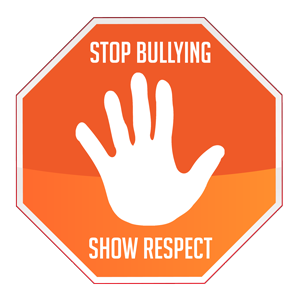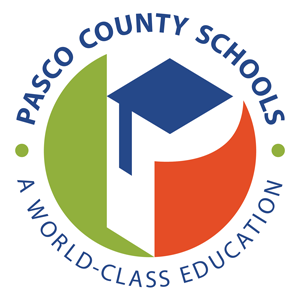MJ Health 6 is offered to all 6th Grade students in ├█╠Ď┤ź├Ż.
The purpose of this course is to provide students with the opportunity to gain the knowledge and skills necessary to become health literate and practice responsible behaviors to promote healthy lifestyle and healthy living. This comprehensive course focuses on the health issues core to the optimum development of adolescents. The content should include, but is not limited to:
- Core Concepts╠ř(dimensions of health, environmental health, illnesses and healthy behaviors)
- Accessing Information╠ř(family and friend influences, disease prevention, reproductive health, medical resources, school and community health)
- Internal and External Influences╠ř(available resources, seeking help, technology, products and services)
- Interpersonal Communication╠ř(healthy alternatives, conflict resolution, verbal and non-verbal, active listening and refusal skills)
- Decision Making╠ř(individual and group decisions, and positive/negative healthy options)
- Goal Setting╠ř(short-term and long-term health strategies, personal health and small groups)
- Self-Management╠ř(personal health practices and internet safety)
- Advocacy╠ř(positive promotion and accurate information sharing)╠ř
Curriculum Topics╠ř
The M/J Health Grade 6this taught through ETR Health Smart curriculum. Lessons that are supplement to the curriculum are ÔÇťHands Only CPRÔÇŁ by the American Heart Association, and human trafficking lesson called ÔÇťUnlocking FreedomÔÇŁ. The M/J Health grade 6this a one semester course.╠ř
Unit 1: Nutrition & Physical Health╠ř
Unit 2: Tobacco, Alcohol, & Other Drug Prevention╠ř
Unit 3: Abstinence, Puberty, & Personal Health (HIV, STD, & Pregnancy included)╠ř
Unit 4: Emotional & Mental Health╠ř
Unit 5: Violence & Injury Prevention╠ř
Hands Only CPR╠ř
Unlocking Freedom (Human Trafficking Lesson)╠ř╠ř
Here are the folders for lesson plans for each grade level:
Health Opportunities Through Physical Education (HOPE) Core╠ř
The HOPE course is only offered for High Schools in ├█╠Ď┤ź├Ż County.
The purpose of this course is to develop and enhance healthy behaviors that influence lifestyle choices and student health and fitness. Students will realize the full benefit of this course when it is taught with an integrated approach.
In addition to the physical education content represented in the benchmarks below, specific health education topics within this course include, but are not limited to:
- Mental/Social Health
- Physical Activity
- Components of Physical Fitness
- Nutrition and Wellness Planning
- Diseases and Disorders
- Health Advocacy
- First Aid/CPR
- Alcohol, Tobacco, and Drug Prevention
- Human Sexuality including Abstinence and HIV
- Internet Safety
Curriculum Topics╠ř
Semester 1╠ř
Unit 1: Building a Foundation (Fitness for Life)╠ř
Unit 2: Becoming and Staying Physically Active╠ř
Unit 3: Moderate and Vigorous Physical Activity╠ř
Unit 4: Muscle Fitness and Flexibility╠ř
Unit 5: Healthy Choices╠ř
Unit 6: Moving Through Life╠ř
Semester 2
Unit 7: Understanding Health and Wellness╠ř
Unit 8: Preventing Disease and Seeking Care╠ř
Unit 9: Embracing Priority Lifestyles╠ř
Unit 10: Building Relationships and Lifelong Health╠ř
Unit 11: Avoiding Destructive Habits╠řSexual Health Education Unit╠ř
Unit 12: Creating Healthy and Safe Communities╠ř
The YRBSS was developed in 1990 to monitor health behaviors that contribute markedly to the leading causes of death, disability, and social problems among youth and adults in the United States. These behaviors, often established during childhood and early adolescence, include
- Unhealthy dietary behaviors
- Inadequate physical activity
In addition, the YRBSS monitors the prevalence of obesity and asthma and other health-related behaviors plus sexual identity and sex of sexual contacts.
YRBSS includes a national school-based survey conducted by Center for Disease Control and Prevention (CDC) and state, territorial, tribal, and local surveys conducted by state, territorial, and local education and health agencies and tribal governments.
School Health Profiles
School Health Profiles╠řis a system of╠řschool-based surveys conducted among╠řschool╠řprincipals and lead╠řhealth╠ředucation teachers at the secondary╠řschool╠řlevel. The╠řSchool╠řHealth╠řProfiles╠řsurvey was developed in 1995 by the CDC, along with state, territorial, local education, and╠řhealth╠řagencies.╠řSchool Health╠řProfiles╠řassesses 8 of the 10 components of the Whole╠řSchool, Whole Community, Whole Child model:╠ř
- ▒ß▒▓╣▒˘│┘│ˇ╠ř▒╗ň│▄│Ž▓╣│┘ż▒┤ă▓ď
- Physical education and physical activity
- ▒ß▒▓╣▒˘│┘│ˇ╠ř▓§▒░¨▒╣ż▒│Ž▒▓§
- Counseling, psychological and social services
- Nutrition environment and services
- Social and emotional climate╠ř
- Family engagement
- Community involvement
Coming Soon!
It is the right of the parent and/or guardian to request to exempt their student from reproductive health & disease education. This can be done in the╠ř
Please refer to the documents below for additional information.
MJ Health 6 is offered to all 6th Grade students in ├█╠Ď┤ź├Ż.
The purpose of this course is to provide students with the opportunity to gain the knowledge and skills necessary to become health literate and practice responsible behaviors to promote healthy lifestyle and healthy living. This comprehensive course focuses on the health issues core to the optimum development of adolescents. The content should include, but is not limited to:
- Core Concepts╠ř(dimensions of health, environmental health, illnesses and healthy behaviors)
- Accessing Information╠ř(family and friend influences, disease prevention, reproductive health, medical resources, school and community health)
- Internal and External Influences╠ř(available resources, seeking help, technology, products and services)
- Interpersonal Communication╠ř(healthy alternatives, conflict resolution, verbal and non-verbal, active listening and refusal skills)
- Decision Making╠ř(individual and group decisions, and positive/negative healthy options)
- Goal Setting╠ř(short-term and long-term health strategies, personal health and small groups)
- Self-Management╠ř(personal health practices and internet safety)
- Advocacy╠ř(positive promotion and accurate information sharing)╠ř
Curriculum Topics╠ř
The M/J Health Grade 6this taught through ETR Health Smart curriculum. Lessons that are supplement to the curriculum are ÔÇťHands Only CPRÔÇŁ by the American Heart Association, and human trafficking lesson called ÔÇťUnlocking FreedomÔÇŁ. The M/J Health grade 6this a one semester course.╠ř
Unit 1: Nutrition & Physical Health╠ř
Unit 2: Tobacco, Alcohol, & Other Drug Prevention╠ř
Unit 3: Abstinence, Puberty, & Personal Health (HIV, STD, & Pregnancy included)╠ř
Unit 4: Emotional & Mental Health╠ř
Unit 5: Violence & Injury Prevention╠ř
Hands Only CPR╠ř
Unlocking Freedom (Human Trafficking Lesson)╠ř╠ř
Here are the folders for lesson plans for each grade level:
Health Opportunities Through Physical Education (HOPE) Core╠ř
The HOPE course is only offered for High Schools in ├█╠Ď┤ź├Ż County.
The purpose of this course is to develop and enhance healthy behaviors that influence lifestyle choices and student health and fitness. Students will realize the full benefit of this course when it is taught with an integrated approach.
In addition to the physical education content represented in the benchmarks below, specific health education topics within this course include, but are not limited to:
- Mental/Social Health
- Physical Activity
- Components of Physical Fitness
- Nutrition and Wellness Planning
- Diseases and Disorders
- Health Advocacy
- First Aid/CPR
- Alcohol, Tobacco, and Drug Prevention
- Human Sexuality including Abstinence and HIV
- Internet Safety
Curriculum Topics╠ř
Semester 1╠ř
Unit 1: Building a Foundation (Fitness for Life)╠ř
Unit 2: Becoming and Staying Physically Active╠ř
Unit 3: Moderate and Vigorous Physical Activity╠ř
Unit 4: Muscle Fitness and Flexibility╠ř
Unit 5: Healthy Choices╠ř
Unit 6: Moving Through Life╠ř
Semester 2
Unit 7: Understanding Health and Wellness╠ř
Unit 8: Preventing Disease and Seeking Care╠ř
Unit 9: Embracing Priority Lifestyles╠ř
Unit 10: Building Relationships and Lifelong Health╠ř
Unit 11: Avoiding Destructive Habits╠řSexual Health Education Unit╠ř
Unit 12: Creating Healthy and Safe Communities╠ř
The YRBSS was developed in 1990 to monitor health behaviors that contribute markedly to the leading causes of death, disability, and social problems among youth and adults in the United States. These behaviors, often established during childhood and early adolescence, include
- Unhealthy dietary behaviors
- Inadequate physical activity
In addition, the YRBSS monitors the prevalence of obesity and asthma and other health-related behaviors plus sexual identity and sex of sexual contacts.
YRBSS includes a national school-based survey conducted by Center for Disease Control and Prevention (CDC) and state, territorial, tribal, and local surveys conducted by state, territorial, and local education and health agencies and tribal governments.
School Health Profiles
School Health Profiles╠řis a system of╠řschool-based surveys conducted among╠řschool╠řprincipals and lead╠řhealth╠ředucation teachers at the secondary╠řschool╠řlevel. The╠řSchool╠řHealth╠řProfiles╠řsurvey was developed in 1995 by the CDC, along with state, territorial, local education, and╠řhealth╠řagencies.╠řSchool Health╠řProfiles╠řassesses 8 of the 10 components of the Whole╠řSchool, Whole Community, Whole Child model:╠ř
- ▒ß▒▓╣▒˘│┘│ˇ╠ř▒╗ň│▄│Ž▓╣│┘ż▒┤ă▓ď
- Physical education and physical activity
- ▒ß▒▓╣▒˘│┘│ˇ╠ř▓§▒░¨▒╣ż▒│Ž▒▓§
- Counseling, psychological and social services
- Nutrition environment and services
- Social and emotional climate╠ř
- Family engagement
- Community involvement
Coming Soon!
It is the right of the parent and/or guardian to request to exempt their student from reproductive health & disease education. This can be done in the╠ř
Please refer to the documents below for additional information.
Parent Resources
╠ř
╠ř
╠ř
╠ř
Florida Rules and Implementation plans
| Florida Rules | Implementation Plans |
|---|---|
╠ř
Additional Resources╠ř╠ř
╠ř


